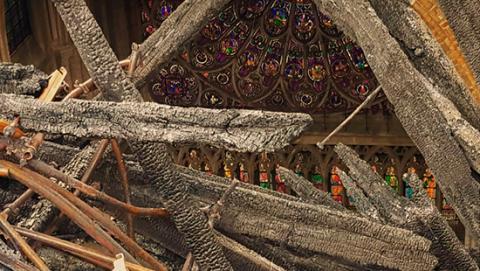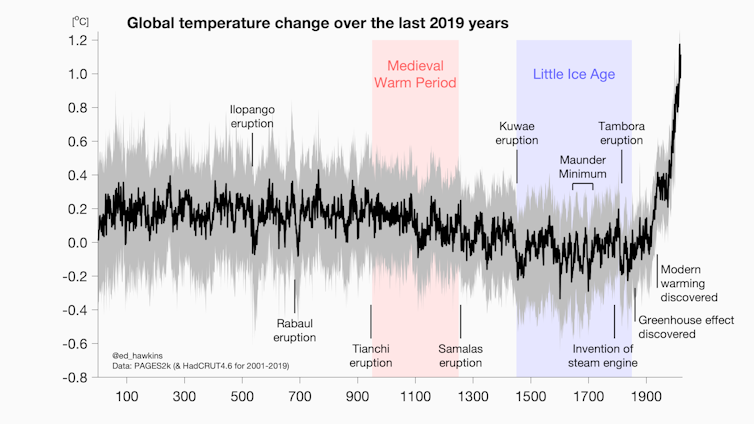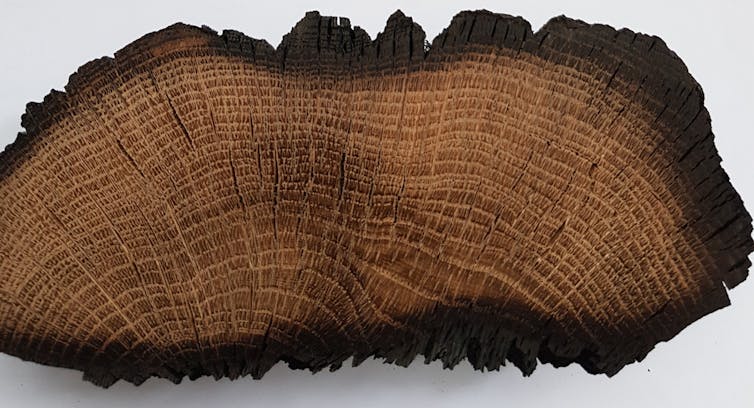
Studying Notre-Dame’s Timbers to Understand Medieval Weather
The 2019 fire at Notre-Dame was a tragic loss of cultural heritage but also a unique scientific opportunity. The charred remains of the iconic cathedral have become invaluable artifacts, revealing stories of the past. This series dives into the research efforts surrounding Notre-Dame, starting with the secrets of its timber frame.
 Notre-Dame’s Origins and the Iconic “Forest”
Notre-Dame’s Origins and the Iconic “Forest”
Notre-Dame, one of France’s most famous landmarks, began construction around 1160 during the reign of Louis VII. Its construction spanned the late 12th and early 13th centuries, featuring a choir, a nave, and towers. Known as the “forest,” its roof was supported by a complex structure of oak beams. In fact, it wasn’t a single framework but several, with parts dismantled and rebuilt over centuries. For instance, around 1225, the upper windows were raised, and during Viollet-le-Duc’s 19th-century restoration, the spire and transept frames were reconstructed.
On April 15-16, 2019, more than 800 years after its construction, a devastating fire engulfed the cathedral. By dawn, the spire was gone, and the roof lay in ruins. Initially considered rubble, the remains—charred beams and metal fragments—were meticulously documented and transported to a specialized storage facility. Researchers now have access to these fragments, which hold a trove of historical and environmental information.
Timber as a Climate Archive
Notre-Dame’s oaks grew between the 11th and 13th centuries, overlapping with the “Medieval Climate Anomaly,” a warm period with little existing data for northern France. Tree rings from the cathedral’s timbers preserve a record of medieval climate conditions. Each ring reflects a year of growth, with its width, density, and isotopic composition capturing details about temperature, precipitation, and environmental stress.
The destruction of Notre-Dame’s timber, while disastrous, offers a rare chance to study the climate of medieval Île-de-France. For instance, dry summers leave a distinct isotopic signature in tree rings, which researchers can analyze to reconstruct past weather patterns.
Understanding Medieval Weather
The “Medieval Climate Anomaly,” once termed the “Medieval Warm Period,” is now seen as a complex era of regional climate variability. While parts of Europe experienced mild temperatures and drier conditions, other regions may have been colder or wetter. This variability likely stemmed from a mix of external climate forces (e.g., solar activity, volcanic eruptions) and natural atmospheric dynamics.
Reconstructions of temperature based on natural archives, including tree rings, ice cores, and coral, are helping scientists refine their understanding of this period. Notre-Dame’s timbers provide one of the few high-resolution climate records from this time, capturing year-by-year changes.
Studying charred remains presents unique challenges. Carbonization alters the physical and chemical properties of wood, and variables such as fire temperature, oxygen availability, and wood species affect the process. Researchers are using advanced tools like Raman spectroscopy and infrared analysis to determine the intensity and impact of the 2019 fire. For example, the wood at Notre-Dame reached temperatures up to 1200°C, and even these extreme conditions preserved some isotopic data.
By calibrating these methods with controlled experiments, researchers can adjust for fire-induced changes in isotopic composition. This allows them to extract original climate data from the timbers, providing insights into the natural variability during the construction of Notre-Dame.

Ed Hawkins
Tree Rings as Natural Archives
Tree rings, often called “natural archives,” are invaluable for reconstructing preindustrial climates. They serve as a bridge between ancient environmental conditions and modern weather data. The growth patterns in Notre-Dame’s oaks, combined with isotopic analysis, reveal not only climate fluctuations but also details about Parisian society, forestry practices, and medieval construction techniques.
Oak Growth
The width, density, and chemical and isotopic composition of tree rings vary with climate. The isotopic compositions of carbon and oxygen in tree rings are traditionally used to study past climate evolution because they are fixed during the growing season. These compositions change during the tree's metabolic reactions, with the intensity of the changes depending on the environmental and climatic conditions during growth.
For example, the carbon that makes up tree cellulose comes from atmospheric CO₂. It is assimilated in the leaves and incorporated into sugars, which then combine to form cellulose molecules. During a dry summer, the tree limits gas exchange to prevent dehydration, leading to an increase in the carbon isotope ratio in the sugars, and consequently in the cellulose. A relatively high carbon isotope ratio in the cellulose of a tree ring can thus indicate that the summer during which the ring was formed was particularly dry.
Depending on the species, region, and growth environment of the tree, the carbon and oxygen isotope ratios can reflect atmospheric temperature, water stress, precipitation levels, or even cloud cover.
Understanding How the Wood Burned
While it is well known that carbonization alters the physical and chemical properties of wood, the degree of alteration varies depending on combustion conditions. Factors such as temperature, heating duration, oxygen availability, the shape and size of the wood sample, the tree species, and its moisture content all influence the carbonization process.
Although reproducing a framework fire in a laboratory setting is challenging, combustion and pyrolysis processes can be replicated and studied experimentally.
Recent advances in analytical tools for characterizing the intensity of wood carbonization could allow scientists to use the carbon and oxygen isotopes from the charred beams of Notre-Dame—and, more broadly, from charcoal—to reconstruct past climates.

For example, the "Raman paleothermometer" method allows researchers to estimate the maximum temperatures reached during the Notre-Dame fire, which were around 1200°C. For temperatures below 400°C, infrared spectroscopy can probe the various stages of thermal decomposition of wood components.
For each of these tools, a calibration curve can be experimentally established, linking the assumed temperature reached to the measured differences in the isotopic signature of the wood. These calibrations will, in the coming years, enable scientists to "correct" isotopic values, thereby tracing back to the natural climate variability during the extensive construction period of Notre-Dame.
Alexa Dufraisse, Directrice de recherche CNRS en archéobotanique, spécialisée en dendro-anthracologie et en anthraco-isotopie, Muséum national d’histoire naturelle (MNHN); Diane du Boisgueheneuc, Doctorante en dendroclimatologie, Sorbonne Université; Frédéric Delarue, Chargé de recherche CNRS, Sorbonne Université et Valérie Daux, Professeure en Géosciences, Université de Versailles Saint-Quentin-en-Yvelines (UVSQ) – Université Paris-Saclay
This article was re-published from The Conversation under a Creative Commons licence. Read the original article.
![]()

